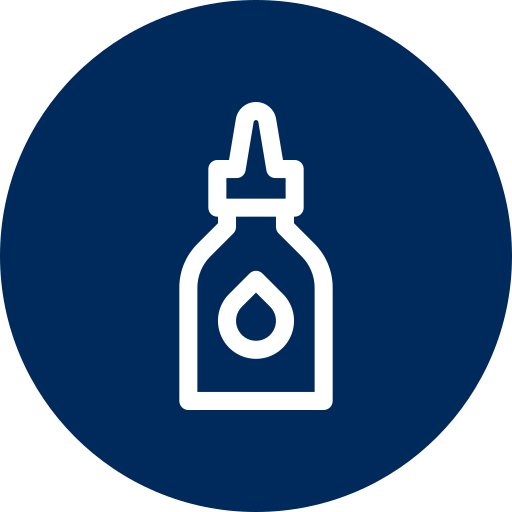Testing that Reaches the World
Forestry and Timber Harvesting Equipment Testing Services
The harsh conditions of the forestry industry can have a significant impact on forestry and tree harvesting equipment. Full tree, or cut to length (CTL) tree harvesting can experience costly equipment failures due to the extreme and adverse conditions of the forest.
Clark Testing has a long history of providing testing services for manufacturers of heavy, off-road equipment including tree-harvesting machinery. Mechanical testing services for forestry equipment includes structural fatigue, ROPS/FOPS, vibration, shock, thermal/climactic, EMC/EMI, rotary/torsional fatigue, power train/gearbox along with lubrication and grease analysis.
Clark’s test engineers custom design the programs or test plans with our customer’s product design engineers. Test simulation on timber harvesting is conducted on the following equipment:
- Skidders
- Processor/Harvesters
- Mulchers
- Log loaders
- Yarders
- Tub Grinders
- Grapples
- Feller Bunchers
- Delimbers
- Horizontal Grinders
- Splitters/Saws
- Wood Chippers
- Log Trucks
- Forwarders
Complex structural, mechanical, hydraulic and electronic systems that make up the components of forestry equipment operate in extreme and adverse conditions. Clark has significant experience in custom engineering test plans to prepare equipment for harsh environments.
Test programs are design based on industry standards and product specific requirements based on field applications. The following list of test standards are used to qualify timber harvesting equipment:
Test Specifications
- ISO 3463:2006 Tractors for agriculture and forestry — Roll-over protective structures (ROPS) — Dynamic test method and acceptance conditions
- ISO 5700:2013 Tractors for agriculture and forestry — Roll-over protective structures — Static test method and acceptance condition
- ISO 8082-1:2009 Self-propelled machinery for forestry — Laboratory tests and performance requirements for roll-over protective structures — Part 1: General machines
- ISO 8082-2:2011 Self-propelled machinery for forestry — Laboratory tests and performance requirements for roll-over protective structures — Part 2: Machines having a rotating platform with a cab and boom on the platform
- ISO 8083:2006 Machinery for forestry — Falling-object protective structures (FOPS) — Laboratory tests and performance requirements
- ISO 8084:2003 Machinery for forestry — Operator protective structures — Laboratory tests and performance requirements
- ISO 11169:1993 Machinery for forestry — Wheeled special machines — performance test methods and criteria for brake systems
- ISO 12003-1:2008 - specifies procedures for both the static and dynamic testing of roll-over protective structures (ROPS) front-mounted on narrow-track wheeled agricultural and forestry tractors. It defines the clearance zone and acceptance conditions for rigid or tiltable, front, two-post ROPS, including any associated rear fixtures, and is applicable to tractors so equipped having the following characteristics.
- ISO 27850:2013 - sets forth the test procedures and performance requirements for a falling-object protective structure, in the event such a structure is installed on an agricultural or forestry tractor
- ISO 3463:2006 - specifies a dynamic test method and the acceptance conditions for roll-over protective structures (cab or frame) of wheeled tractors for agriculture and forestry.
- SAE J1116 – 201301 Self Propelled off-road work machines including:
- Earthmoving
- Implements and Attachments
- Forestry
- Road Building and Maintenance
- Specialized Mining
- Powered Industrial Trucks
- SAE J2267 Hazards of objects penetrating operator station
- SAE J2417 Lifting capacity of knuckle-boom log loaders & forestry equipment
Engine Oil Analysis
Engine oil testing is a key component of a Predictive Maintenance Program (PMP) for lumber companies and forestry equipment owners. Engine oil testing can be scheduled based on test data trends of the equipment. Depending on the test data it is possible to extend the time between engine oil changes which can help to save money and schedule equipment utilization.
A vital engine oil test for forestry equipment is the Total Base Number or TBN that measures acidity or acid build up in the engine oil. When crankcase oils are exposed to acidic compounds, it is key to monitor TBN to ensure the oil has sufficient alkaline properties thereby reducing the corrosive effects of acidity in the oil. The TBN is tested in accordance with ASTM D2896 or IP400.
Other important tests to consider for engine oil testing includes contaminants such as dust, glycol or antifreeze in the engine block. The introduction of these impurities into the engine crankcase will cause corrosion, clogging and accelerated wear of the engine. Clark Lab’s Engine Test Package (ETP) will analyze the health of the engine oil and help identify typical contaminants of impediments to the reliability of the engine. Click here to submit an oil sample and set up your engine oil Predictive Maintenance Program.
Coolant Fluid Testing
The condition of an engine is largely determined by the cleanliness of the engine oil in the crankcase, however another critical characteristic for engine operation is associated with the engine coolant. A significant number of equipment failures are attributed to coolant system failures. The continuous development heavy-duty diesel engines with high efficiency, high temperature and variable material cooling properties creates challenges for engine cooling systems.
Testing coolants is an essential predictive maintenance program that works in tandem with condition monitoring programs to optimize reliability, reduce unscheduled downtime and avoid engine failure. Regularly analyzing glycol will confirm potential need to replenish or replace coolant, determine if any contaminants have been introduced and assess the coolant protection for engine integrity.
Clark’s coolant testing package includes several ASTM test methods for alkalinity, freeze point, and pH level. We are typically test particle count to determine if there is any debris in the cooling system.
Transmission Fluid Analysis
Manual and automatic transmission fluids are affected by thermal conditions, gear loads and operating variables. Harsh operating conditions of a forest can create significant challenges for transmission and gearbox fluids. Regular analysis of transmission fluids will determine wear debris, contaminants and moisture. Heavy loads and high stress on agriculture equipment will have an effect on the transmission fluid thereby causing a thermal breakdown.
Under high load conditions, the breakdown or failure of transmission fluid will cause oxidation that produces a sludge or varnish in the gearbox. Left unchecked, these conditions will ultimately have an effect on the mechanical systems affecting performance and eventually cause gear failure.
Clark Labs has specialty gearbox testing services to measure gear wear performance, friction, oxidation and wear resistance. Our FZG Gear Lubricant Test evaluates anti-wear characteristics and load carrying capacities of lubricants. The FZG gear test rig simulates a misaligned gear set operating in a bath of lubricant subjected to 12 increasing torque load stages. Tooth-wear is examined between stages for scuffing or scoring to assess the fluids performance. Click here to order a transmission fluid test package or FZG gear test.
Predictive Maintenance and Reliability Testing Services:
A Predictive Maintenance Programs (PMP) for forestry equipment is essential for maximizing equipment reliability and optimizing equipment life cycles. It is widely known that a dedicated PMP routine will improve equipment reliability, minimize unscheduled failures, reduce maintenance, and repair costs. The rough terrain of a forest will constantly create the potential for contaminants and impurities entering engine crankcases, hydraulic system and fuel systems. A standard program for testing engine oil, hydraulic fluid, diesel fuel, transmission fluid and brake fluid will increase equipment reliability, reduce equipment failure, lower replacement costs and minimize schedule interruptions.
Clark’s Condition Monitoring Services (CMS) support maintenance managers with standard packages for predictive maintenance and reliability. Our lab can provide analytical services on used engine oil and hydraulic fluids and offer trend analysis of the operating condition of forestry equipment.
Brake Fluids Testing
Moisture, corrosion and oxidation are common contaminants that will affect the functionality of brake fluid and braking systems. Introduction of moisture or water into brake fluid can cause an adverse operating condition by increasing the functioning temperature of the fluid. Brake fluid is designed to operate at high temperatures due to heat generated during the braking process. Water contamination will lower the boiling point of brake fluid thereby causing less effectiveness of the fluid and the potential for brake failure. Along with moisture, we also test oil contamination and glycol content.
Fuel Testing
Diesel fuel testing is critical for ensuring quality control, specification validation and regulatory compliance. Diesel fuel or distillate oil testing can provide analysis of fuel quality by monitoring sulfur, trace metals, and biodiesel blends. Bulk storage of diesel fuel can sometimes compromise the integrity of fuel, Clark provides fuel sampling consultation and recommendations to ensure homogeneity and quality of the test sample.
Hydraulic Fluid Testing
Particulate contamination is the leading cause of hydraulic equipment failure. Uncontaminated hydraulic fluid will ensure continuous operation and help to avoid schedule interruptions. Hydraulic system failure will often require the temporary removal of equipment from the operation causing unscheduled downtime.
The cleanliness level of hydraulic fluids is determined by particle count. The particle count test measures solid particle contaminants in the fluid sample. Particle counts can be measured in accordance with various industry standards.
There are two rating systems that define fluid cleanliness: National Aerospace Standard (NAS 1638) and International Standards Organization (ISO 4406).
The NAS 1638 standard classifies the particle size into five distinct groups that include:
- 5 to 15 microns
- 15 to 25 microns
- 25 to 50 microns
- 50 to 100 microns
- >100 microns
NAS 1638 categorizes contamination levels ranging on a scale from 0 to 12 (dirtiest) based on the number of particles per 100mL of fluid for each of the categories above.
- >4 microns
- >6 microns
- 25 to 50 microns
- >14 microns
The ISO code classifies contamination levels using three numbers, each of which represents a contaminant level based on the number of particles per 1mL of fluid for the corresponding size class (respectively larger than 4 microns, larger than 6 microns and larger than 14 microns).
Clark provides particle size testing in accordance with ASTM D6595. Particle count analysis includes the following test package. In addition to particle count, other typical test packages for hydraulic fluid include physical properties, wear properties oxidation/corrosion and moisture. The minimal cost of hydraulic fluid testing compared to the expense of equipment failure is a simple business case.



